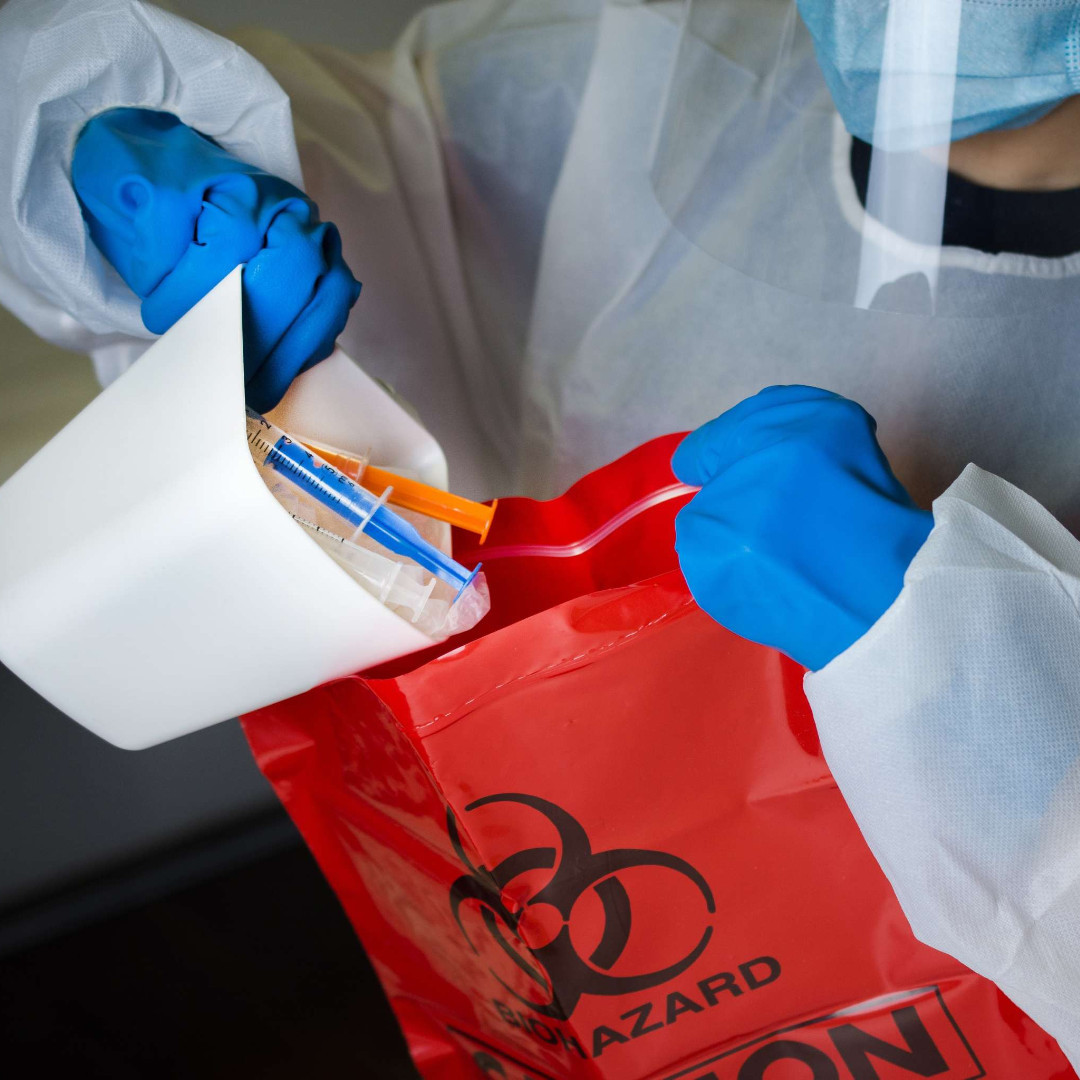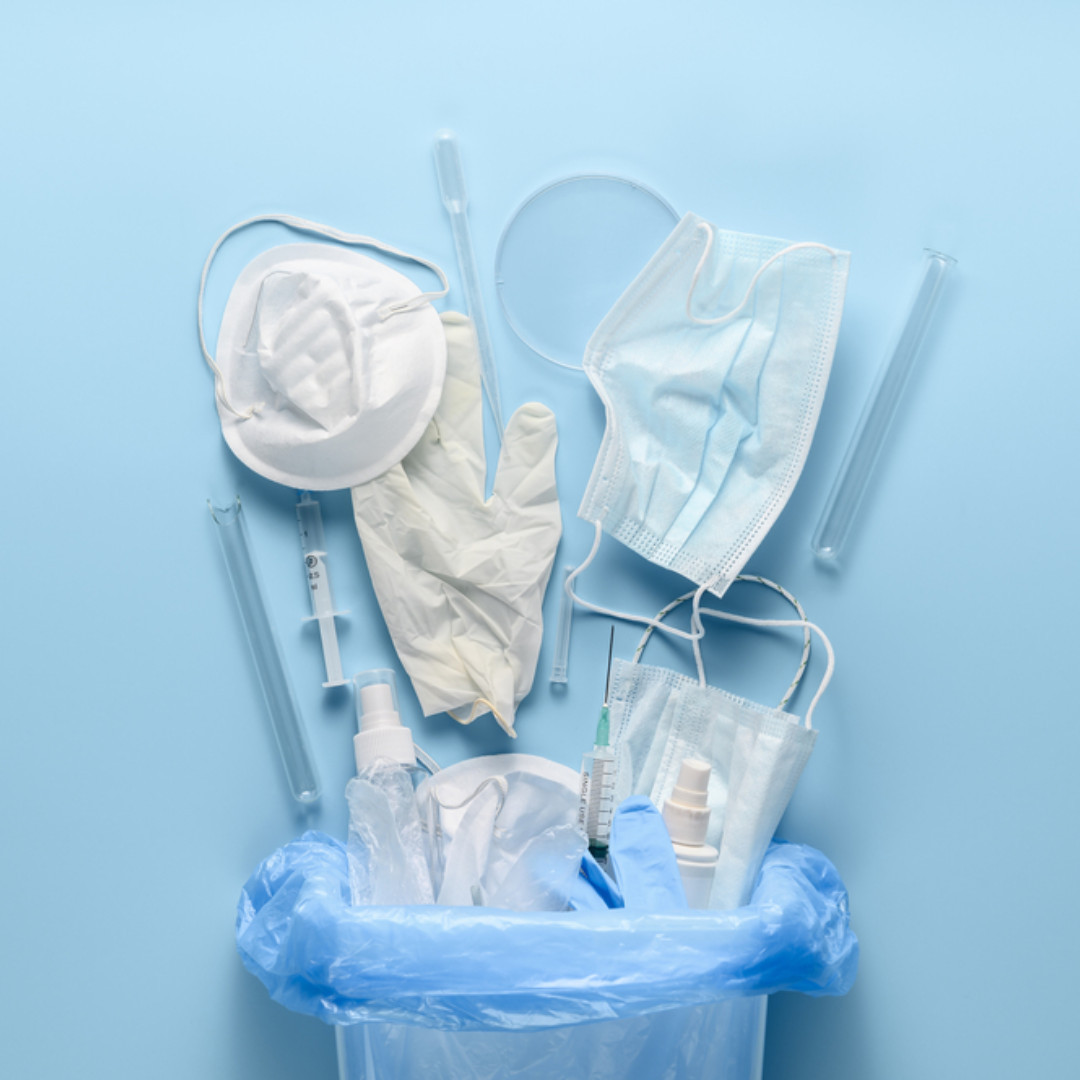Deciding how often your organization needs pickup services for your medical waste is critical for the healthy functioning of your organization. Although not as commonly thought of as doctors and nurses, operations management is just as vital in the healthcare industry.
Waste Medic prides ourselves on exceptional customer services and helping our clients overcome the operational challenges regarding medical waste management, while ensuring compliance and fair, transparent and reliable pricing.
Why Proper Medical Waste Disposal is Integral
According to the World Health Organization, being exposed to dangerous medical waste can cause a wide variety of illnesses and injuries (particularly when loose sharps are present), and injuries can impact a number of different individuals.
Used sharps should be immediately placed in a sharps disposal container. These containers are made of puncture-resistant plastic with leak-resistant sides and bottom. They also have a tight fitting, puncture-resistant lid. Red bags are certainly strong, but they’re not designed to hold any sharps materials. Keep syringes, blades and other items out of red bags.
Used needles and other sharps are dangerous to people and pets if not disposed of safely because they can injure people and spread infections that cause serious health conditions. The most common infections are Hepatitis B (HBV), Hepatitis C (HCV), and Human Immunodeficiency Virus (HIV).
Medical personnel are the first to be impacted by improperly disposed of medical waste. Patients and facility visitors are at risk of exposure, especially children, whose curiosity leads them to investigate unusual things in their path.
Support services, such as cleaning personnel and laundry team members, are at risk when they accidentally come in contact unproperly disposed of medical waste in the performance of their duties.
Additionally, medical waste that makes its way into city dumps poses a risk for the facility’s workers, scavengers, and wildlife.
Who Regulates Medical Waste?
Medical waste is primarily regulated by local state environmental and health departments. The EPA has not had authority since the Medical Waste Tracking Act of 1988 expired in 1991. It is important to understand your state programs and guidance to ensure compliance.
Other federal agencies have regulations regarding medical waste. These agencies include Centers for Disease Control (CDC), Occupational Safety and Health Administration (OSHA), U.S. Food and Drug Administration (FDA), and potentially others.
Medical waste regulations are complicated. Waste Medic provides the expertise and reliable response to an organization’s needs and will ensure the safety of staff, patients, the public, and the environment.
Ensuring Compliance & Managing Waste Streams
Organizations can work with their service provider to schedule regular pickups (weekly, biweekly, or monthly) of medical waste in coordination with your level of usage. Additionally, we are your on call partner for those times when your medical waste collection bins fill up quicker than usual.
Waste Medic’s convenient, flexible options combined with our customer-first mentality are the core of our business. The type of medical practice you have will determine how often your medical waste needs to be picked up.
Frequent collection keeps containers empty for continual use. If containers become too full, waste cannot be simply thrown in random disposal vessels. Medical personnel and patients rely on constant waste collection to keep a facility operating safely and efficiently.
Preparing for Your Pickup
Avoid any missteps in the medical waste disposal process by reviewing these guidelines for preparing your medical waste for pickup and transportation.
Collect & Segregate Medical Waste
Categorizing medical waste with the correct separation isolates each type so it can be managed in the proper way. There are five major categories: sharps, biohazardous waste, trace chemotherapy waste, RCRA hazardous waste, and pharmaceutical waste… and these should never be mixed.
Use the Right Containers
It’s critical to use the correct containers, both in terms of physical strength and appearance, for medical waste that will be transported effectively. Containers must be resilient and strong enough to resist breakage during the handling process. And containers should never be overfilled.
Properly Fill & Tie Your Bags
Overfilling containers creates a problem when tying off the bags. Ideally, fill the red bags only partially to the top. Red bags must be properly tied (using an overhand knot or a twist or zip tie) and placed into another container that is approved for medical waste. You should not be able to see the bag after the secondary container is closed.
Label & Prepare Your Medical Waste for Transport
Container labeling seems like a relatively easy task; however, label coding is a critical step in the medical waste disposal process. Containers must be labeled according to state regulations.
Store Your Medical Waste for Pickup
Once your medical waste has been properly segregated, it may need to be stored until pickup. A secure area that is inaccessible to the public and is separated from food consumption areas is ideal. (A refrigerator or freezer that can be used, if necessary.)
Proper Documentation
Remember, you are responsible for medical waste even after it leaves your facility. Any permits required for the transport and delivery of your medical waste should be kept on file and you should know where your medical waste is going. Be sure to receive a signed manifest document from your medical waste services provider before the waste leaves your facility. This is the most important part of the transportation process.
Waste Medic makes this process simple by offering online access to manifests through our online portal.
A Reliable Healthcare Partnership
Proper segregation, packaging, labeling, and storage of your medical waste will help ensure that it will be ready to go when your Waste Medic representative arrives. Are there any gaps in your medical waste disposal process? Contact us for a consultation.











